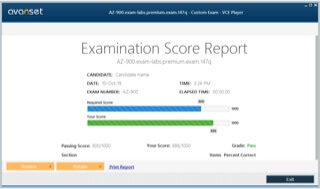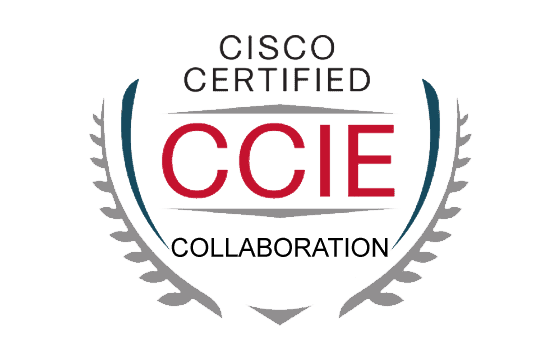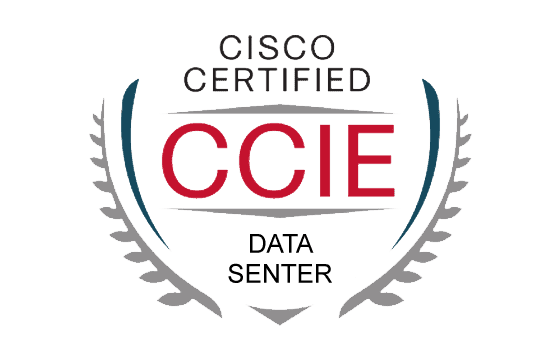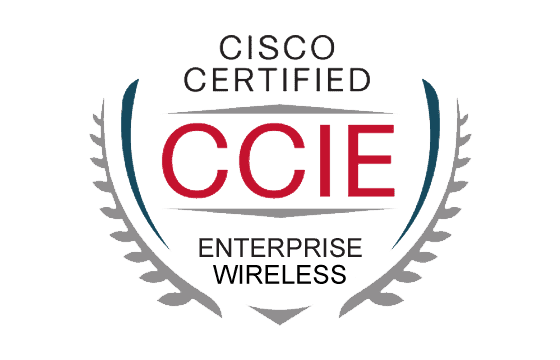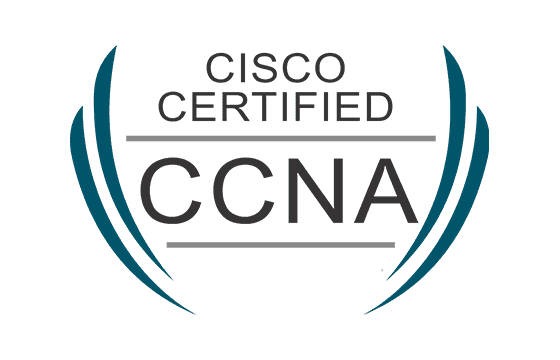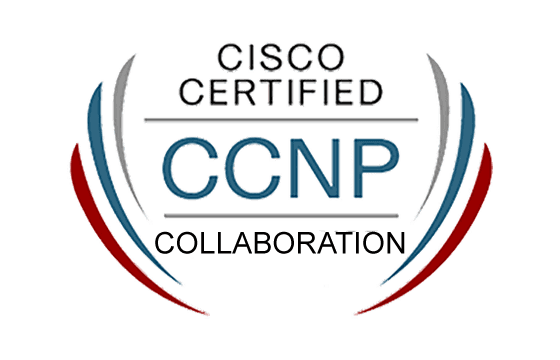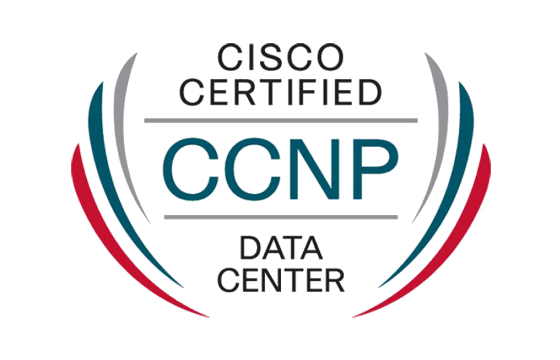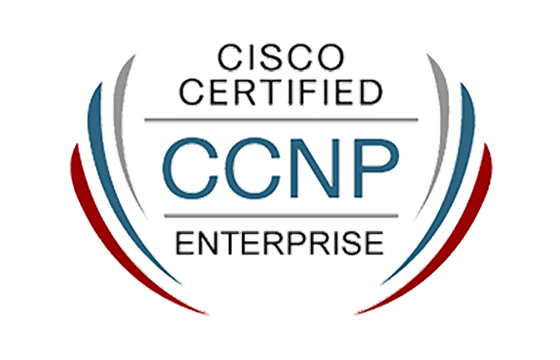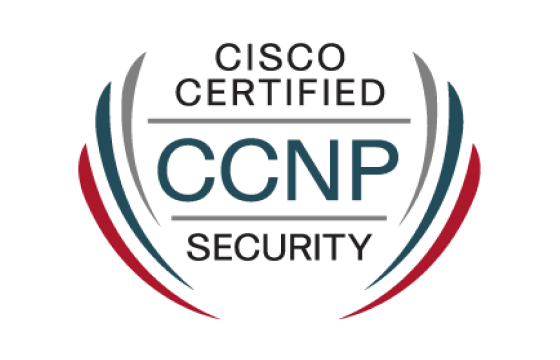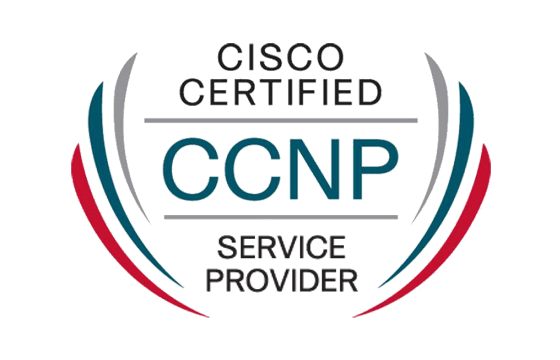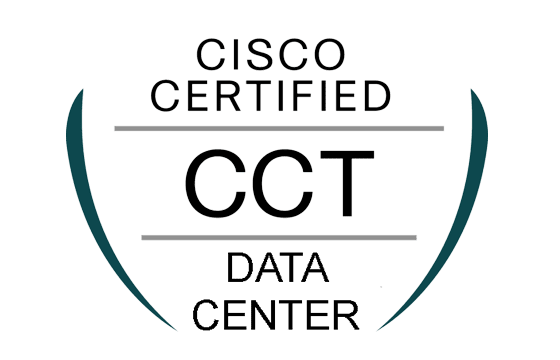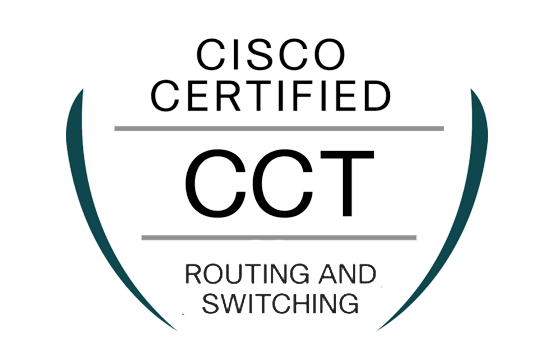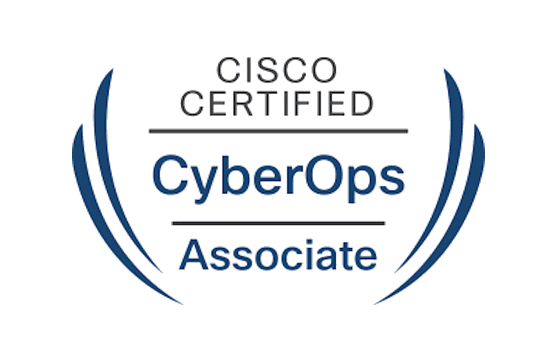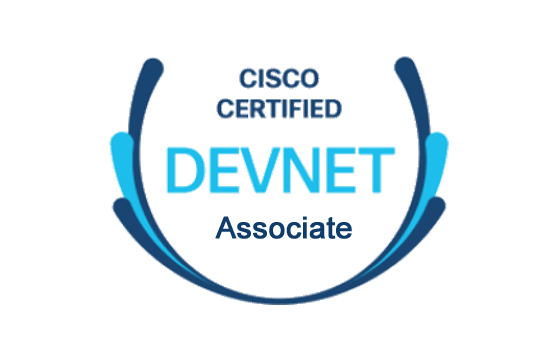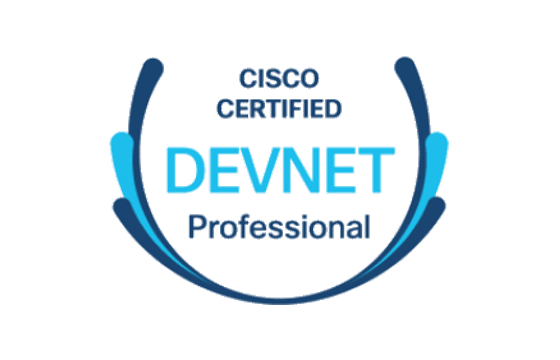Pass Your Cisco 350-029 Exam Easy!
Cisco 350-029 Exam Questions & Answers, Accurate & Verified By IT Experts
Instant Download, Free Fast Updates, 99.6% Pass Rate
Archived VCE files
| File | Votes | Size | Date |
|---|---|---|---|
File Cisco.Realtests.350-029.v2014-08-27.by.EMMA.260q.vce |
Votes 6 |
Size 310.23 KB |
Date Aug 27, 2014 |
File Cisco.Actualtests.350-029.v2013-12-30.by.James.382q.vce |
Votes 41 |
Size 4.74 MB |
Date Dec 30, 2013 |
File Cisco.Passguide.350-029.v2013-08-02.by.Nathan.362q.vce |
Votes 13 |
Size 1.86 MB |
Date Aug 05, 2013 |
File Cisco.Testkings.350-029.v2013-05-22.by.Anonymous.339q.vce |
Votes 1 |
Size 1.56 MB |
Date Jun 06, 2013 |
File Cisco.ActualTests.350-029.v2012-02-28.by.SM.342q.vce |
Votes 1 |
Size 1.31 MB |
Date Feb 28, 2012 |
Cisco 350-029 Practice Test Questions, Exam Dumps
Cisco 350-029 (CCIE SP Written) exam dumps vce, practice test questions, study guide & video training course to study and pass quickly and easily. Cisco 350-029 CCIE SP Written exam dumps & practice test questions and answers. You need avanset vce exam simulator in order to study the Cisco 350-029 certification exam dumps & Cisco 350-029 practice test questions in vce format.
Mastering the CCIE Data Center v2.0: A Deep Dive into the Cisco 350-029 Exam
The Cisco Certified Internetwork Expert (CCIE) Data Center certification stands as a pinnacle of achievement for network engineers specializing in data center technologies. It validates expert-level skills in planning, designing, implementing, operating, and troubleshooting complex data center infrastructure. Earning this certification signifies a deep understanding of technologies such as Nexus switching, Application Centric Infrastructure (ACI), Unified Computing System (UCS), and storage networking. The journey to certification is rigorous, culminating in a challenging practical lab exam. The written qualification for this track was the 350-029 exam, which served as the gateway to the lab portion. Achieving the CCIE Data Center certification requires a comprehensive skill set that goes beyond simple configuration. Candidates must demonstrate an ability to think critically under pressure, troubleshoot systematically, and integrate disparate technologies into a cohesive, high-performing system.
The certification is designed for senior-level engineers and architects who are responsible for the digital foundation of modern enterprises. The 350-029 exam specifically tested the theoretical knowledge required to build and manage these sophisticated environments, covering a broad and deep curriculum that reflected the latest industry trends and technological advancements. The value of a CCIE in the marketplace is significant. It is a globally recognized standard of excellence that opens doors to senior roles and complex projects. Employers view CCIE holders as leaders who can be trusted with their most critical infrastructure. While the certification path has evolved, understanding the knowledge domains of the 350-029 exam remains highly relevant. The fundamental principles and technologies it covered are still the bedrock of today's data centers, making this knowledge essential for any aspiring expert in the field of data center networking and operations.
The Evolution to the 350-029 Exam Blueprint
The field of data center technology is in a constant state of flux, driven by the demands for greater speed, scalability, and automation. The 350-029 exam, also known as the CCIE Data Center v2.0 Written Exam, was developed to reflect this evolution. It moved beyond the traditional three-tier data center architecture to heavily emphasize next-generation concepts. These included spine-leaf fabrics, overlay networks, and software-defined networking (SDN) principles, which were becoming industry standards for building modern, agile, and resilient data centers. A significant shift in the 350-029 exam blueprint was the increased focus on automation and orchestration. The industry recognized that manual configuration and management were no longer sustainable in large-scale data center environments. Therefore, the exam incorporated topics related to Python scripting, REST APIs, and automation tools like Ansible and Puppet. This required candidates to develop programming skills alongside their traditional networking expertise, preparing them for the realities of infrastructure as code and DevOps practices that are now prevalent in the data center space. Another key aspect of the evolution was the deep integration of Cisco's Application Centric Infrastructure (ACI). ACI represented a paradigm shift from network-centric to application-centric policy models. The 350-029 exam required candidates to have a profound understanding of the ACI architecture, including its core components like the Application Policy Infrastructure Controller (APIC), fabric policies, endpoints, and contracts. This focus ensured that certified experts were not just proficient with legacy systems but were also masters of the policy-driven frameworks that define the modern data center. The curriculum was designed to build a bridge from established technologies to these newer, more dynamic systems.
Understanding the Core Competencies for the 350-029 Exam
Success in the 350-029 exam hinged on mastering a set of core competencies that spanned the entire data center stack. The first and most fundamental competency was an expert-level understanding of L2 and L3 technologies within the data center context. This included advanced knowledge of spanning-tree protocols, VLANs, trunking, port channels, OSPF, EIGRP, and BGP. Candidates needed to know how these protocols behave on Nexus platforms and how they are leveraged to build robust and scalable network underlays that support modern overlay technologies like VXLAN. The second core competency involved a deep knowledge of data center fabric architecture. This went beyond traditional designs and focused on spine-leaf topologies as implemented with both standalone Nexus switches and Cisco ACI. For the 350-029 exam, this meant understanding traffic flows, endpoint learning, multi-tenancy, and fabric management. A candidate needed to be able to compare and contrast different fabric solutions, understand their use cases, and design solutions that meet specific business and technical requirements for performance, scalability, and resilience. A third critical area was proficiency in storage networking. The 350-029 exam tested knowledge of Fibre Channel, Fibre Channel over Ethernet (FCoE), and iSCSI. This included understanding zoning, fabric login processes, N-Port ID Virtualization (NPIV), and integration with unified fabric switches like the Nexus series. Competency in this domain required familiarity with how servers connect to storage arrays and how to design and troubleshoot the storage fabric to ensure reliable, high-performance data access, which is a critical function of any enterprise data center. Finally, virtualization and compute were indispensable competencies. The exam demanded expertise in Cisco's Unified Computing System (UCS), covering its architecture, service profiles, and management through UCS Manager and UCS Central. Furthermore, knowledge of server virtualization platforms like VMware vSphere was essential. Candidates needed to understand how virtual machines are networked, how virtual switches operate, and how the physical and virtual networking layers are integrated. This holistic view, from the physical hardware up to the virtualized application workload, was a hallmark of the expertise validated by the 350-029 exam.
Deep Dive into Cisco Data Center Infrastructure
Cisco’s data center infrastructure is built upon a portfolio of tightly integrated products designed for performance, scalability, and programmability. The foundation of this infrastructure is the Cisco Nexus family of switches. These platforms are engineered specifically for the demanding environment of the data center, offering high port density, low latency, and a robust operating system, NX-OS. Understanding the nuances of different Nexus platforms, from the 2000 series Fabric Extenders (FEX) to the 9000 series spine and leaf switches, was a primary requirement for the 350-029 exam. A key element of the infrastructure is the concept of a unified fabric. Cisco pioneered this idea to converge LAN, SAN, and Inter-Process Communication (IPC) traffic onto a single Ethernet network. This simplifies cabling, reduces power and cooling requirements, and lowers the total cost of ownership. Technologies like Fibre Channel over Ethernet (FCoE) and Data Center Bridging (DCB) are central to this convergence. A thorough grasp of how to configure and verify these technologies on Nexus switches was crucial for any candidate preparing for the 350-029 exam, as it represents a core architectural principle. Beyond networking hardware, the infrastructure includes Cisco's Unified Computing System (UCS). UCS revolutionized the server market by abstracting server identities into software-based service profiles. This stateless computing model allows for rapid provisioning, mobility, and recovery of server workloads. The 350-029 exam blueprint required an in-depth understanding of UCS components, including Fabric Interconnects, I/O Modules, and different blade and rack server models. Mastery of UCS Manager for configuration and management was also a non-negotiable skill for aspirants. The overarching management and orchestration layer ties the entire infrastructure together. Tools like Cisco Data Center Network Manager (DCNM) for traditional network management and the Application Policy Infrastructure Controller (APIC) for ACI environments provide centralized control and visibility. The 350-029 exam stressed the importance of these management platforms, as well as the automation capabilities they expose through APIs. An expert is expected to not only configure individual components but also to manage the data center as a holistic, programmable system, a key focus area of the exam.
Nexus Switching and Routing Fundamentals
At the heart of any Cisco-powered data center lies the Nexus platform and its operating system, NX-OS. For the 350-029 exam, a candidate's knowledge had to extend far beyond basic switch configuration. It required a deep understanding of the advanced features that make NX-OS suitable for mission-critical environments. This includes features like Virtual Port Channels (vPC), which provide Layer 2 multi-pathing and high availability by allowing links that are physically connected to two different Nexus switches to appear as a single port channel to a third device. Routing protocol implementation on NX-OS was another fundamental area. While protocols like OSPF and EIGRP are common, their application within a data center fabric has specific considerations. The 350-029 exam tested the ability to design and implement these protocols for scalability and fast convergence in large spine-leaf underlays. Furthermore, expertise in BGP, particularly its use as the routing protocol for VXLAN EVPN overlays, was absolutely critical. This required understanding address families, route reflectors, and policy-based routing in a data center context. NX-OS also introduced the concept of Virtual Device Contexts (VDCs), a feature that allows a single physical switch to be partitioned into multiple logical switches. Each VDC operates as an independent device with its own processes, configuration, and administrative domains. This powerful feature enables secure multi-tenancy and resource isolation. A comprehensive understanding of how to configure, manage, and troubleshoot VDCs was a key differentiator for expert-level candidates and a significant topic within the 350-029 exam blueprint. Finally, features related to fabric management and extensibility were vital. This included understanding how Fabric Extenders (FEX) connect to parent switches, the different models of FEX architecture, and best practices for their deployment. Additionally, familiarity with the programmability features of NX-OS, such as its Python interpreter and API access, was becoming increasingly important. The 350-029 exam signaled a shift where a data center expert needed to be as comfortable with scripting and automation as they were with the command-line interface.
Exploring Cisco Application Centric Infrastructure (ACI)
Cisco Application Centric Infrastructure (ACI) represents a fundamental departure from traditional networking models. It is a policy-based solution that automates and simplifies the process of configuring and managing the data center network. Instead of focusing on network constructs like VLANs and IP subnets, ACI focuses on the applications. The 350-029 exam required a thorough understanding of this application-centric approach, where network connectivity and security are defined based on application requirements and then automatically rendered across the fabric. The core of the ACI architecture is the Application Policy Infrastructure Controller (APIC). The APIC is the single point of management and policy definition for the entire ACI fabric. It is not in the data path but is responsible for maintaining the health of the fabric and pushing policies down to the physical spine and leaf switches. For the 350-029 exam, candidates needed to be experts in navigating the APIC GUI and understanding its object model, including tenants, application profiles, endpoint groups (EPGs), and contracts, which define the communication rules between EPGs. ACI utilizes a spine-leaf fabric built on Nexus 9000 series switches. This architecture provides high-bandwidth, low-latency, non-blocking connectivity. Under the hood, ACI uses a combination of technologies, including VXLAN for the data plane overlay and IS-IS as the underlay routing protocol. While ACI automates the configuration of these technologies, a CCIE candidate preparing for the 350-029 exam was expected to understand their underlying mechanics. This knowledge is crucial for advanced troubleshooting and for integrating the ACI fabric with external networks. A key benefit of ACI is its ability to integrate with a wide ecosystem of third-party devices and services, such as firewalls, load balancers, and virtualization platforms. This is achieved through service graphs and L4-L7 service insertion. The 350-029 exam blueprint included topics covering how to integrate these services into the ACI fabric to build a complete application delivery solution. Understanding how policies are extended to virtualized environments and how the fabric provides end-to-end visibility was essential for demonstrating expert-level competence in this domain.
Storage Networking Concepts for the CCIE Candidate
Data is the lifeblood of any modern organization, making storage networking a critical component of data center infrastructure. The 350-029 exam ensured that candidates possessed expert-level knowledge in this domain, starting with the bedrock of storage networks: Fibre Channel (FC). This included a deep understanding of the FC protocol stack, fabric services like the Name Server and Zoning Server, and the fabric login (FLOGI) process. Candidates were expected to know how to design, implement, and troubleshoot a multi-switch FC SAN fabric from the ground up. The evolution of data center networking led to the convergence of storage and IP networks. Fibre Channel over Ethernet (FCoE) was a key technology in this transition, allowing FC frames to be encapsulated and transported over a 10 Gigabit or faster lossless Ethernet network. The 350-029 exam required proficiency in FCoE configuration on unified fabric switches like the Nexus series. This included understanding the FCoE Initialization Protocol (FIP), Data Center Bridging (DCB) extensions that create the lossless fabric, and the different FCoE deployment models. Beyond Fibre Channel, IP-based storage protocols like iSCSI and NFS also play a significant role in many data centers. The exam blueprint covered these technologies, requiring candidates to understand how to provision and secure IP storage traffic. This involved configuring dedicated storage VLANs, implementing Quality of Service (QoS) to ensure performance, and using security features like Challenge-Handshake Authentication Protocol (CHAP) for iSCSI. An expert must be able to choose the appropriate storage protocol based on application requirements and cost considerations. Finally, managing the storage fabric is a crucial skill. The 350-029 exam tested knowledge of zoning, which is the mechanism used to control which devices (initiators) can communicate with other devices (targets) in a SAN. This included understanding different zoning modes and best practices for creating and managing zonesets. Furthermore, familiarity with N-Port ID Virtualization (NPIV) and N-Port Virtualization (NPV) was essential. These features help to scale large SAN environments by reducing switch domain IDs and simplifying management, topics a true data center expert is expected to master.
Virtualization and the Data Center Environment
Modern data centers are heavily virtualized, and any expert-level certification like the CCIE must reflect this reality. The 350-029 exam placed a strong emphasis on the intersection of networking and virtualization. This required a deep understanding of server virtualization platforms, with VMware vSphere being the most prominent example. Candidates needed to be proficient with concepts like the vSphere Standard Switch (vSS) and the vSphere Distributed Switch (vDS), and understand how they connect virtual machines to the physical network infrastructure. The integration between the physical and virtual network is a key area of focus. Technologies that extend the features of the physical network up to the hypervisor are critical. The 350-029 exam required knowledge of how Cisco Nexus switches integrate with VMware vCenter. This includes features like the Cisco Application Virtual Switch (AVS) and the Nexus 1000V, which, although a legacy product, taught foundational principles of virtual switching. Understanding how policies, security, and visibility can be consistently applied across both physical and virtual workloads was paramount. Cisco’s Unified Computing System (UCS) is designed from the ground up with virtualization in mind. Its service profile concept allows for the rapid deployment of hypervisor hosts. The 350-029 exam demanded a comprehensive understanding of how to configure UCS to support a virtualized environment. This included setting up network connectivity using vNICs, storage connectivity using vHBAs, and implementing quality of service for different traffic types. Mastery of the integration between UCS Manager and VMware vCenter was a key skill to demonstrate. The evolution of virtualization also includes network virtualization, with technologies like VXLAN playing a central role. The exam blueprint required candidates to understand how VXLAN creates Layer 2 overlay networks that can span across physical Layer 3 boundaries. This is fundamental to providing workload mobility and multi-tenancy in a modern, multi-rack data center. An expert must understand how hypervisors participate in these VXLAN overlays and how they are managed and orchestrated by controllers, whether in a standalone environment or as part of a comprehensive solution like Cisco ACI.
Preparing Your Study Strategy for the 350-029 Exam
Developing an effective study strategy for a high-stakes test like the 350-029 exam is as important as the technical knowledge itself. The first step is to thoroughly dissect the official exam blueprint. This document is the definitive guide to what is testable. Break down each domain and topic into smaller, manageable chunks. Use the blueprint to create a detailed checklist, allowing you to track your progress and identify areas of weakness that require more attention. This structured approach ensures that no critical topic is overlooked. A successful strategy must balance theoretical study with hands-on practice. Reading books, white papers, and configuration guides is essential for building foundational knowledge. However, concepts in data center technologies can be abstract and complex. They only truly solidify when you configure and troubleshoot them in a lab environment. Access to physical hardware like Nexus switches and UCS servers is ideal, but high-quality lab rental services and simulators are also effective alternatives for gaining the necessary practical experience for the 350-029 exam. Time management is a crucial component of your preparation plan. The scope of the 350-029 exam is vast, and it is easy to get bogged down in a single topic. Create a realistic study schedule that allocates specific amounts of time to each blueprint item. Be disciplined in sticking to this schedule, but also be flexible enough to adjust it if you find certain topics more challenging than anticipated. Consistent, daily study is far more effective than sporadic, long cramming sessions. Finally, incorporate practice exams into the final phase of your preparation. Taking practice tests under exam-like conditions helps you assess your knowledge, get used to the question formats, and improve your time management skills. Analyze the results of each practice exam carefully. For every question you get wrong, take the time to understand why your answer was incorrect and revisit the underlying theory. This iterative process of learning, practicing, and assessing is the most reliable path to success on the 350-029 exam.
Advanced ACI Constructs and Policies
Moving beyond the basics of Cisco's Application Centric Infrastructure (ACI) is a prerequisite for tackling the 350-029 exam. Advanced constructs and policies are what enable the fine-grained control and scalability that ACI promises. A key concept in this area is the use of microsegmentation. This involves pushing security policies down to the individual workload or virtual machine level, often within the same Endpoint Group (EPG). Understanding how to implement microsegmentation using intra-EPG contracts and isolation policies is a critical skill for creating a zero-trust security model within the data center. Another advanced topic is the management of policy on a larger scale using advanced features of the Application Policy Infrastructure Controller (APIC). This includes the use of common tenants and vzAny. The common tenant provides a way to define shared services, such as DNS, Active Directory, or syslog servers, that can be accessed by multiple other tenants in the fabric. The vzAny construct provides a mechanism to apply a contract to all EPGs within a given VRF, simplifying the implementation of widespread policies, such as allowing ICMP for troubleshooting or logging access for all applications. The 350-029 exam also required a deep understanding of Quality of Service (QoS) within the ACI fabric. While ACI simplifies many aspects of networking, ensuring application performance often requires the implementation of QoS policies. This involves defining custom QoS classes, marking traffic, and applying policies to specific EPGs or contracts to prioritize critical application traffic and manage bandwidth. Candidates needed to know how to configure these policies on the APIC and verify their operation on the underlying Nexus 9000 switches, ensuring service level agreements are met. Furthermore, mastering the art of troubleshooting advanced ACI policies is essential. When applications fail to communicate, an expert must be able to navigate the APIC to diagnose the issue. This involves using tools like the policy verification tool, checking contracts and filters, analyzing fault logs, and understanding the operational state of EPGs and bridge domains. The 350-029 exam tested not just the ability to configure these advanced constructs but also the ability to systematically debug them when they do not behave as expected, a true test of expert-level knowledge.
Multi-Pod and Multi-Site ACI Deployments
As organizations grow, their data center needs often expand beyond a single physical location. Cisco ACI addresses this with Multi-Pod and Multi-Site architectures, which were advanced but crucial topics for the 350-029 exam. ACI Multi-Pod allows an administrator to extend the ACI fabric across multiple physical locations, or "pods," while maintaining a single APIC cluster for management. This design is excellent for disaster avoidance scenarios within a metropolitan area, as it creates a single logical fabric with a unified policy domain across the pods. To implement Multi-Pod, a high-speed, low-latency IP network is required to interconnect the spines of the different pods. This inter-pod network (IPN) acts as the transport. The 350-029 exam required a detailed understanding of the IPN requirements, including MTU size, DHCP relay configuration, and OSPF or BGP for routing. Candidates needed to know how control plane and data plane traffic, including VXLAN encapsulated packets, are exchanged between pods. Understanding the fault domains and failure scenarios in a Multi-Pod environment was also a key aspect of demonstrating expertise. For geographically dispersed data centers requiring disaster recovery or active-active deployments, ACI Multi-Site is the preferred solution. Unlike Multi-Pod, each site in a Multi-Site architecture has its own independent APIC cluster and ACI fabric. A Cisco Multi-Site Orchestrator (MSO) is then used to manage and stretch policies, such as tenants and EPGs, across the different sites. This architecture provides greater scalability and fault isolation, as an issue in one site's APIC cluster does not impact the others. The 350-029 exam tested this fundamental architectural difference. Candidates preparing for the 350-029 exam needed to understand how to design and configure inter-site connectivity and policy extension with MSO. This involved creating schemas and templates to define objects that are stretched across sites. It also required knowledge of how Layer 2 bridge domains and Layer 3 VRFs are extended, and how data plane traffic is forwarded between sites over the inter-site network (ISN). The ability to compare and contrast Multi-Pod and Multi-Site, and to choose the appropriate solution based on a given set of requirements, was a hallmark of a CCIE-level engineer.
Mastering Overlay Technologies: VXLAN and EVPN
Overlay technologies are at the core of the modern data center, enabling the flexibility and scalability required by virtualization and cloud computing. The 350-029 exam placed a heavy emphasis on Virtual Extensible LAN (VXLAN), the de facto standard for data center overlays. VXLAN encapsulates Layer 2 Ethernet frames into Layer 3 UDP packets, allowing logical Layer 2 networks to be stretched across a physical Layer 3 underlay network. This overcomes the limitations of traditional VLANs, such as the 4094 segment limit, and enables workload mobility. A critical component of a VXLAN fabric is the control plane, which is responsible for mapping end-host locations (MAC and IP addresses) to their corresponding tunnel endpoints (VTEPs). While early VXLAN deployments used a flood-and-learn mechanism, the industry has largely adopted Ethernet VPN (EVPN) as the standard control plane. The 350-029 exam required an expert-level understanding of EVPN, which uses extensions to the BGP protocol to distribute endpoint reachability information. This eliminates the need for flooding and provides a more scalable and efficient control plane. Candidates needed to be proficient in the different BGP EVPN route types and their functions. For example, Type-2 routes are used to advertise MAC and IP addresses, while Type-3 routes are used for inclusive multicast traffic handling. Understanding how VTEPs discover each other and exchange this information via BGP route reflectors was a key area of study. The ability to configure BGP, address families, and VRFs for a VXLAN EVPN fabric on Nexus switches was a practical skill that was thoroughly tested. Beyond the theory, the 350-029 exam required knowledge of how to troubleshoot a VXLAN EVPN fabric. This involves being able to verify the BGP control plane, check the VTEP status, inspect the forwarding tables on the switches, and analyze VXLAN encapsulated packets. An expert must be able to trace the path of a packet from a source host to a destination host through the underlay and overlay networks, identifying any potential issues with routing, encapsulation, or policy enforcement along the way. This end-to-end understanding is what separates a true expert from a novice.
Data Center Security Architectures
Security is not an afterthought in the modern data center; it is an integral part of the architecture. The 350-029 exam reflected this by including a comprehensive domain on data center security. A fundamental concept is defense-in-depth, which involves implementing multiple layers of security controls. This starts at the infrastructure level with features like Control Plane Policing (CoPP) on Nexus switches to protect the CPU from denial-of-service attacks, and extends to features like port security and DHCP snooping to secure the access layer. A major focus of data center security is segmentation, which is the practice of dividing the network into smaller, isolated zones to limit the blast radius of a security breach. Traditionally, this was done with VLANs and access control lists (ACLs). However, the 350-029 exam required expertise in more advanced segmentation techniques. This includes the use of private VLANs (PVLANs) for server-to-server isolation and the implementation of Virtual Routing and Forwarding (VRF) instances to create logically separate routing domains for different tenants or applications. With the rise of sophisticated threats, integrating next-generation firewalling and intrusion prevention systems (IPS) into the data center is essential. The exam tested knowledge of how to deploy and integrate these security appliances. This includes understanding different deployment modes, such as transparent (bridged) mode versus routed mode, and how to use policy-based routing (PBR) or service graphs in ACI to steer specific traffic flows through these appliances for inspection. The ability to integrate security without creating performance bottlenecks was a key consideration. Finally, the 350-029 exam covered security features related to the technologies themselves. This included securing storage fabrics with Fibre Channel Port Security and zoning, implementing role-based access control (RBAC) on management platforms like UCS Manager and APIC to enforce the principle of least privilege, and using authentication, authorization, and accounting (AAA) with protocols like RADIUS and TACACS+ to control administrative access to all data center devices. A holistic approach to security, woven into every layer of the infrastructure, was the expected standard.
Implementing Fibre Channel and FCoE
Despite the growth of IP-based storage, Fibre Channel (FC) remains a dominant protocol for high-performance, block-level storage in enterprise data centers. The 350-029 exam required candidates to have a mastery of FC SAN implementation. This started with the physical layer, understanding different FC port types (N, F, E), and cabling. It then moved to the configuration of a multi-switch fabric, including setting up Inter-Switch Links (ISLs), configuring domain IDs, and ensuring fabric stability through proper design principles. A core task in any FC SAN is managing connectivity through zoning. The exam demanded a deep understanding of zoning concepts and implementation. This included the differences between World Wide Name (WWN) based zoning and port-based zoning, and the best practices for each. Candidates needed to know how to create zones, add them to zonesets, and activate those zonesets to enforce the access control policies that dictate which servers (initiators) can communicate with which storage arrays (targets). The ability to do this efficiently from the command line of a Nexus switch was a fundamental skill. Fibre Channel over Ethernet (FCoE) was developed to converge storage and data traffic onto a single, unified Ethernet fabric, reducing cost and complexity. The 350-029 exam tested this convergence technology extensively. A key prerequisite for FCoE is a lossless Ethernet network, which is achieved through Data Center Bridging (DCB) extensions like Priority-based Flow Control (PFC) and Enhanced Transmission Selection (ETS). Candidates had to be proficient in configuring these DCB features to create a reliable transport for FCoE traffic. The FCoE implementation itself involves several steps. This includes creating a dedicated VLAN for FCoE traffic, enabling the FCoE feature on the switches, and configuring virtual Fibre Channel (vFC) interfaces that are bound to physical Ethernet ports. The FCoE Initialization Protocol (FIP) is used for device discovery and login. An expert preparing for the 350-029 exam was expected to understand the entire FIP snooping process and be able to troubleshoot FCoE connectivity issues, from the initiator all the way to the storage target, across the unified fabric.
Unified Computing System (UCS) In-Depth
Cisco's Unified Computing System (UCS) is a cornerstone of its data center portfolio, and the 350-029 exam required an exceptionally deep level of knowledge on this platform. This went far beyond a surface-level understanding. It required a detailed grasp of the UCS architecture, including the roles of the Fabric Interconnects (FIs), I/O Modules (IOMs) or Fabric Extenders (FEX), and the various blade and rack server models. Understanding how these components interact to form a single, unified management domain is the starting point for mastering UCS. The true power of UCS lies in its policy-based management model, which is centered on the concept of service profiles. A service profile is a software definition of a server, encapsulating everything from its identity (UUID, MAC addresses, WWNs) to its firmware, boot order, and connectivity policies. The 350-029 exam demanded complete proficiency in creating and managing service profiles and their associated templates. This included understanding how to use pools and policies to automate the creation of these identities, enabling the stateless computing model that makes UCS so agile. Connectivity is a critical aspect of UCS management. Candidates needed to be experts in configuring the networking and storage aspects of the system within UCS Manager. This involves setting up VLANs, VSANs, Quality of Service policies, and creating vNICs (virtual Network Interface Cards) and vHBAs (virtual Host Bus Adapters) that are presented to the server operating systems. Understanding the different network control policies, such as CDP, LLDP, and failover mechanisms for NIC teaming, was also essential for building a resilient compute environment. Advanced UCS topics covered by the 350-029 exam included multi-chassis deployments, managing rack-mount servers through UCS Manager, and understanding the different Fabric Interconnect modes (Ethernet switching mode vs. Fibre Channel switching mode). Furthermore, knowledge of firmware management was crucial. This involves understanding firmware bundles, the process of upgrading the entire UCS domain using Auto Install, and the importance of maintaining consistent firmware levels across all components to ensure stability and compatibility.
UCS Manager and Central Integration
While UCS Manager is the primary tool for managing a single UCS domain, enterprise environments often consist of multiple, geographically dispersed domains. To address this, Cisco developed UCS Central, a platform for managing multiple UCS domains from a single pane of glass. The 350-029 exam blueprint included this multi-domain management aspect, requiring candidates to understand the role and architecture of UCS Central. It acts as a manager of managers, allowing administrators to create global policies that can be applied consistently across all registered UCS domains. A key feature of UCS Central is the use of global pools and policies. For example, an administrator can create a global pool of MAC addresses, UUIDs, or WWNs in UCS Central. When a service profile is created in a local UCS Manager that is registered with UCS Central, it can draw its identity from these global pools. This prevents identity conflicts across the enterprise and ensures consistency. Similarly, global policies for firmware, boot order, or network connectivity can be defined once in UCS Central and then enforced across all domains. The 350-029 exam tested the ability to configure and leverage these global constructs. Registering a UCS domain with UCS Central is a critical first step, and candidates were expected to know this process. It involves establishing trust and communication between the local UCS Manager and the central instance. Once registered, administrators can perform inventory management, fault monitoring, and firmware upgrades for all domains from the UCS Central interface. This centralization dramatically simplifies administration and reduces the potential for human error in large-scale deployments. Another important aspect of UCS Central is its ability to create global service profile templates. These templates can be used to deploy servers in any of the registered domains. This is particularly powerful for disaster recovery scenarios or for organizations that need to rapidly provision compute capacity at different sites. The 350-029 exam required an understanding of how these global templates work and how they differ from local service profile templates within a single UCS Manager instance, showcasing a candidate's grasp of enterprise-scale compute management.
Hyperconverged Infrastructure (HCI) with HyperFlex
The data center landscape has seen a significant shift towards hyperconverged infrastructure (HCI), which combines compute, storage, and networking into a single, software-defined platform. Cisco's entry into this market is HyperFlex, and the 350-029 exam required familiarity with this technology. HyperFlex is built on the Cisco UCS platform, leveraging its policy-based management, but adds a distributed software layer called the HyperFlex Data Platform (HXDP) that pools and manages the local storage from all the servers in a cluster. Understanding the architecture of HyperFlex was key. A HyperFlex cluster consists of several UCS servers (nodes), each contributing its CPU, memory, and local disk drives (SSDs and HDDs). The HXDP software runs on these nodes and creates a single, distributed, high-performance datastore that is presented to the hypervisor (typically VMware vSphere). The 350-029 exam tested knowledge of the core components, including the Controller VMs that run on each node and manage the storage I/O, and the integration with Fabric Interconnects for network connectivity. Data management features of the HyperFlex Data Platform were also important topics. This includes how the platform handles data distribution, striping data across all nodes in the cluster to maximize performance. It also includes data protection features like replication and erasure coding to ensure high availability in the event of a node or disk failure. The 350-029 exam expected candidates to understand these concepts and how they contribute to the resilience and performance of the HCI cluster. Features like inline deduplication and compression, which optimize storage capacity, were also relevant. Finally, the deployment and management of a HyperFlex cluster were testable areas. The installation process is highly automated, using a wizard-driven installer that deploys the hypervisor, the Controller VMs, and configures the cluster. Management is typically done through a vCenter plugin, providing a familiar interface for virtualization administrators. An expert-level candidate preparing for the 350-029 exam needed to understand this lifecycle management, from initial deployment to scaling the cluster by adding more nodes, and performing non-disruptive upgrades.
Automation and Orchestration in the Modern Data Center
The overarching theme of the modern data center is automation. Manual, box-by-box configuration is no longer a viable option for managing infrastructure at scale. The 350-029 exam placed a significant emphasis on automation and orchestration skills, reflecting this industry trend. This required candidates to move beyond the traditional CLI and embrace programmatic ways of interacting with the network. A foundational skill in this domain is scripting, with Python being the most prevalent language in network automation. A key enabler for automation is the Application Programming Interface (API). Modern data center platforms, such as the Nexus switches (through NX-API), UCS Manager, and the ACI APIC, all expose robust RESTful APIs. The 350-029 exam required candidates to understand the principles of REST APIs, including how to make API calls using standard HTTP methods (GET, POST, PUT, DELETE) to retrieve data or make configuration changes. Knowledge of data formats like XML and JSON, which are used to structure the data in API requests and responses, was also mandatory. Configuration management tools like Ansible, Puppet, and Chef have become standard for automating infrastructure provisioning and management. The exam blueprint included these tools, requiring an understanding of their basic concepts. For example, a candidate might need to know how Ansible uses playbooks, inventories, and modules to push configurations to multiple devices simultaneously. The goal is to treat infrastructure as code (IaC), where the desired state of the data center is defined in version-controlled text files, enabling repeatable and consistent deployments. Orchestration takes automation a step further by coordinating multiple automated tasks into a cohesive workflow. Tools like Cisco UCS Director were relevant to the 350-029 exam as they provide a single portal for orchestrating the provisioning of compute, network, and storage resources. An orchestrator can, for example, execute a workflow that automatically creates VLANs on a switch, defines a storage LUN, provisions a service profile on UCS, and then deploys a virtual machine from a template, all in a single, automated process. This level of end-to-end automation was a key concept for expert-level data center engineers.
Troubleshooting Methodologies for the 350-029 Exam
Possessing deep technical knowledge is only half the battle in the 350-029 exam and in real-world data center operations. The other half is the ability to apply that knowledge to solve complex problems efficiently. A systematic troubleshooting methodology is therefore not just a skill but a necessity. The top-down approach starts at the application layer and works down the OSI stack, while the bottom-up approach starts with the physical layer and works up. A CCIE candidate must be proficient in both and know when to apply each one based on the nature of the problem presented. Another effective methodology is divide-and-conquer. This involves breaking the problem down into smaller, more manageable parts. In a complex data center environment, you can isolate different domains, such as the network underlay, the VXLAN overlay, the storage fabric, or the compute system. By testing connectivity and functionality at the boundaries between these domains, you can quickly narrow down the scope of the problem. For example, if a virtual machine cannot reach its storage, you would first check its connectivity to the physical network, then the physical network's connectivity to the storage switch, and so on. The 350-029 exam emphasized the importance of a structured approach. This means gathering symptoms, asking clarifying questions (even if just to yourself), and forming a hypothesis about the root cause. Before making any changes, an expert formulates a plan to test their hypothesis. If the test validates the hypothesis, a solution is implemented. If not, the hypothesis is revised based on the new information gathered. This iterative process of hypothesizing, testing, and refining prevents random, chaotic troubleshooting that wastes time and can potentially cause further issues. Documentation and verification are the final steps in any professional troubleshooting process. After a problem is resolved, it is crucial to document the root cause and the steps taken to fix it. This builds a knowledge base for the future. Equally important is to verify that the fix has not introduced any new problems. This means performing comprehensive post-change validation, checking not only the specific application that was broken but also any related systems that might be impacted by the change. The 350-029 exam assumed this level of professional discipline.
Analyzing and Resolving Nexus Platform Issues
Troubleshooting the Cisco Nexus platform was a cornerstone of the 350-029 exam. A common set of issues revolves around Layer 2 technologies. Problems with Virtual Port Channels (vPC) are frequent, such as a vPC peer-link failure or a configuration mismatch between the two peer switches. An expert must know how to use commands like show vpc brief and show vpc consistency-parameters to quickly identify these issues. Understanding the role of the vPC keepalive link and the expected behavior during various failure scenarios is critical for rapid resolution. Layer 3 routing problems on Nexus switches also require a systematic approach. When troubleshooting routing protocols like OSPF or BGP, the first step is to verify neighbor adjacencies. Commands like show ip ospf neighbor or show bgp l3vpn evpn summary are indispensable. If neighbors are not forming, the issue could be related to mismatched parameters, MTU settings, or underlying connectivity problems. Once adjacencies are stable, the next step is to examine the routing table to see if the expected routes are being learned and installed correctly. Route maps and prefix lists are often sources of error. Hardware and platform-specific issues can be more challenging to diagnose. This includes problems like high CPU utilization, memory leaks, or hardware module failures. The 350-029 exam required familiarity with the tools NX-OS provides for this. The show processes cpu command helps identify which process is consuming excessive resources. The Ethanalyzer tool, an integrated packet capture utility, is invaluable for inspecting control plane traffic directly on the switch. Understanding how to interpret system logs (show logging logfile) is also a fundamental skill for finding clues about the root cause of an issue. Finally, troubleshooting security features is a vital skill. This could involve an access control list (ACL) that is incorrectly blocking legitimate traffic or a Control Plane Policing (CoPP) policy that is too restrictive. When debugging ACLs, the log keyword can be added to an access control entry (ACE) to generate a syslog message every time that entry is matched, which is extremely helpful. Verifying port security configurations and AAA settings is also part of a comprehensive troubleshooting checklist for securing the Nexus platform, a key domain of the 350-029 exam.
Debugging Cisco ACI Fabric and Connectivity
Troubleshooting in Cisco ACI is fundamentally different from traditional networking due to its policy-driven, controller-based architecture. The 350-029 exam required a new set of skills tailored to this environment. The first point of investigation is always the Application Policy Infrastructure Controller (APIC). The APIC's fault management system provides a centralized view of all health issues in the fabric, from physical connectivity problems to policy resolution failures. Learning to effectively navigate the faults tab, understand fault codes, and trace their origin is the most important first step. When an application endpoint cannot communicate with another, the issue often lies in the policy configuration. A common problem is a misconfigured contract or filter. The APIC provides several tools to debug this. The Visore tool (Managed Object Browser) allows you to inspect the live running configuration of any object in the fabric. The troubleshooting wizard can simulate a packet flow between two EPGs, showing you exactly where the policy is permitting or denying the traffic. These tools are essential for validating that the configured policy is being correctly applied by the fabric. For issues that appear to be related to the underlying fabric or forwarding, ACI provides specific tools for on-the-ground debugging. The acidiag command on the APIC can be used to run a suite of health checks on the fabric. On the leaf switches themselves, you can use the show endpoints command to verify if the fabric has learned the location of the source and destination hosts. If an endpoint is missing, it could indicate a problem with VLANs, LLDP, or the integration with the hypervisor. The 350-029 exam tested this deep operational knowledge. Advanced ACI troubleshooting, as expected for a CCIE candidate, involves understanding the underlying technologies. This means being able to check the VXLAN tunnels (VTEPs) and the IS-IS underlay routing protocol on the spine and leaf switches. While ACI automates this, an expert must be able to verify its operational state when things go wrong. Using commands to check the IS-IS adjacencies or the VXLAN network identifiers (VNIs) associated with a bridge domain can help pinpoint issues that are not immediately obvious from the APIC's policy-level view, a key differentiator tested by the 350-029 exam.
Resolving Storage Networking Problems
Storage networking problems can be particularly disruptive, and the 350-029 exam required a mastery of troubleshooting them. In a Fibre Channel (FC) SAN, a common issue is a host (initiator) being unable to see its storage (target). The troubleshooting process starts by verifying the physical layer, checking cables and SFP status. The next step is to check the fabric login process. The show flogi database command on a Nexus or MDS switch is critical. If the initiator's WWN does not appear in this table, it has not successfully logged into the fabric, and the problem lies between the host and its connected switch port. If the FLOGI is successful, the next area to investigate is zoning. Zoning is the primary security mechanism in a SAN, and a misconfiguration is a frequent cause of connectivity issues. An administrator must verify that the initiator's WWN and the target's WWN are both members of a zone, and that this zone is part of the active zoneset for the fabric. The show zoneset active command is used for this verification. It is easy to make a typo in a WWN or to forget to activate the zoneset after making a change, so careful checking is essential. In a converged network using Fibre Channel over Ethernet (FCoE), the troubleshooting process adds another layer of complexity. Since FCoE runs on top of Ethernet, you must first troubleshoot the underlying Ethernet network. This includes verifying the VLANs and ensuring that the Data Center Bridging (DCB) features for lossless transport are working correctly. The FCoE Initialization Protocol (FIP) is used for discovery, so checking the FIP snooping database on the switch can reveal if the FCoE devices are being discovered properly. The 350-029 exam expected this multi-layered troubleshooting capability. Performance issues in a storage network can be subtle and difficult to diagnose. These can be caused by oversubscription on Inter-Switch Links (ISLs) or by slow-draining devices that are causing backpressure in the fabric. Tools on the switches can help identify these problems. Monitoring port counters for discards, CRC errors, and other error statistics can point to a faulty SFP or cable. Analyzing traffic patterns and port utilization over time can reveal congestion hotspots. An expert needs to know which counters to look at and how to interpret them to resolve these performance-related storage issues.
Troubleshooting UCS and Virtualization Integration
The tight integration of Cisco UCS and virtualization platforms like VMware vSphere creates a powerful combination, but also introduces unique troubleshooting challenges. The 350-029 exam required candidates to be adept at solving problems in this converged environment. A common issue is a newly deployed server failing to boot from its SAN LUN. This often involves a multi-step verification process, starting in UCS Manager to confirm the vHBA configuration, boot policies, and the WWPN assigned to the server's service profile. Once the UCS side is verified, the investigation moves to the storage fabric. You must ensure that the WWPN of the server's vHBA has been correctly zoned to the storage array's target ports on the SAN switch. Then, on the storage array itself, the LUN must be provisioned and masked correctly to be presented to that specific WWPN. A failure at any one of these steps—UCS, the SAN switch, or the storage array—will prevent the server from seeing its boot device. A CCIE candidate must be able to troubleshoot this entire chain methodically. Networking problems for virtual machines running on UCS servers are another frequent area of trouble. If a VM loses network connectivity, the issue could be in the virtual world or the physical world. The process starts at the hypervisor, checking the VM's vNIC settings and its connection to the vSwitch. Then, you move to UCS Manager to inspect the vNIC placement, the VLANs associated with it, and the status of the upstream network connections from the Fabric Interconnects. The show pinning command can be used to see which physical server port a vNIC is currently mapped to. Sometimes, issues arise from a mismatch between the physical and virtual network configurations. For example, a VLAN might be configured on the vSwitch inside the hypervisor but not provisioned on the Fabric Interconnects or the upstream network switches. This would lead to a connectivity failure. The 350-029 exam stressed the importance of end-to-end verification. Using tools like CDP or LLDP from both the hypervisor and the Fabric Interconnects can help verify that the physical and virtual components see each other as expected, which is a key step in resolving these integration challenges.
Go to testing centre with ease on our mind when you use Cisco 350-029 vce exam dumps, practice test questions and answers. Cisco 350-029 CCIE SP Written certification practice test questions and answers, study guide, exam dumps and video training course in vce format to help you study with ease. Prepare with confidence and study using Cisco 350-029 exam dumps & practice test questions and answers vce from ExamCollection.
Top Cisco Certification Exams
- 200-301
- 350-401
- 350-701
- 300-410
- 300-715
- 820-605
- 350-601
- 300-710
- 300-420
- 300-415
- 300-425
- 200-901
- 350-501
- 700-805
- 350-901
- 300-620
- 300-730
- 350-801
- 200-201
- 400-007
- 300-435
- 350-201
- 500-220
- 300-810
- 300-430
- 300-815
- 100-150
- 300-515
- 300-610
- 300-440
- 300-820
- 300-510
- 100-140
- 300-735
- 300-910
- 300-720
- 300-215
- 300-615
- 300-635
- 700-250
- 300-535
- 300-725
- 500-560
- 500-443
- 700-750
Site Search:



